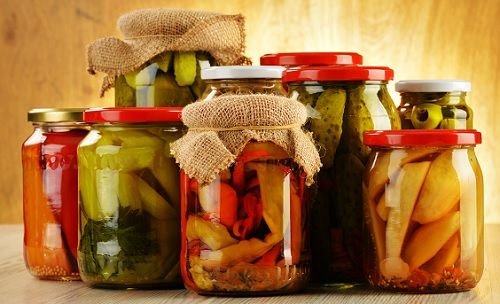Fermentation is a type of conservation of vegetables, berries and fruits, during which, under the influence of physical and chemical factors, lactic acid is formed, which is a natural preservative.
Apples and watermelons, cucumbers and tomatoes, onions and garlic are fermented, but the main role in this type of conservation belongs, of course, to cabbage. Cabbage is usually fermented in winter and early spring, as well as in late autumn to strengthen the body and prevent all kinds of seasonal diseases.
A solution consisting of 7-8 grams of sodium chloride dissolved in 1 liter of water is used to ferment vegetables. Barrels have always been used for fermentation. Today, people often use enameled pots and sometimes three-liter jars. You can use other trays, but experts recommend coating them with two layers of polyethylene to avoid contact of pickled vegetables with metal.
After choosing the dishes, you can proceed to the preliminary preparation of the vegetables. Vegetables must meet the following characteristics: Have a healthy appearance; Possess a good turgidity; Not have rotten damage; and be mature but not too mature.
Vegetables are cleaned of inedible parts of plants (upper parts, leaves, husks and damaged parts, which may contain pathogenic microorganisms).
If the size of the vegetable is such that it cannot be fermented whole, it is ground (for example, cabbage).
After preparing and washing the vegetables, they are placed on the plates so that there is little space between them. This is necessary so that the brine can soak all the vegetables well. When the fruits are stacked, you can start filling the brine. Although its concentration is 7-8%, it will be present in vegetables in an amount of 3.5 to 4.5%. Brine is prepared by dissolving the required amount of salt in warm water. It is necessary that the brine completely cover the cooked vegetables.
Vegetables poured with brine are placed under oppression (a three-liter bottle, a bottle full of water). During pickling, part of the brine may leak. To avoid this, it is advisable to eliminate the accumulated gases daily by piercing the thickness of the vegetables with a knife or a long fork.
The fermentation process itself takes, on average, 3 to 7 days. In this case, the ambient temperature should be in the range of 18-24 ° C. If it is lower, the fermentation time will increase, and at a temperature of approximately 0 ° C it usually stops. At temperatures above + 24 ° C, the development of pathogenic microflora can begin.
The second fermentation method is suitable for chopped vegetables. Such vegetables are carefully rubbed with salt, placed in three-liter jars or placed on enameled plates. And the oppression is placed on top (for example, a three-liter jug of water on a large plate). On average, after 3 to 4 days of fermentation, vegetables can be placed in a cool place. The fermented product is ready.
Useful properties of fermented foods.
As a result of fermentation, the sugars found in vegetables, under the influence of lactic acid bacteria, become lactic acid, which inhibits the development of pathogenic microflora in the body.
The nutritional value of pickled vegetables has no parallel. The fiber remains virtually unchanged. The level of sugar decreases, and instead organic acids are formed, which have a beneficial effect on the gastrointestinal tract, increase immunity and prevent various infectious diseases.

Thanks for sharing with us!
Downvoting a post can decrease pending rewards and make it less visible. Common reasons:
Submit